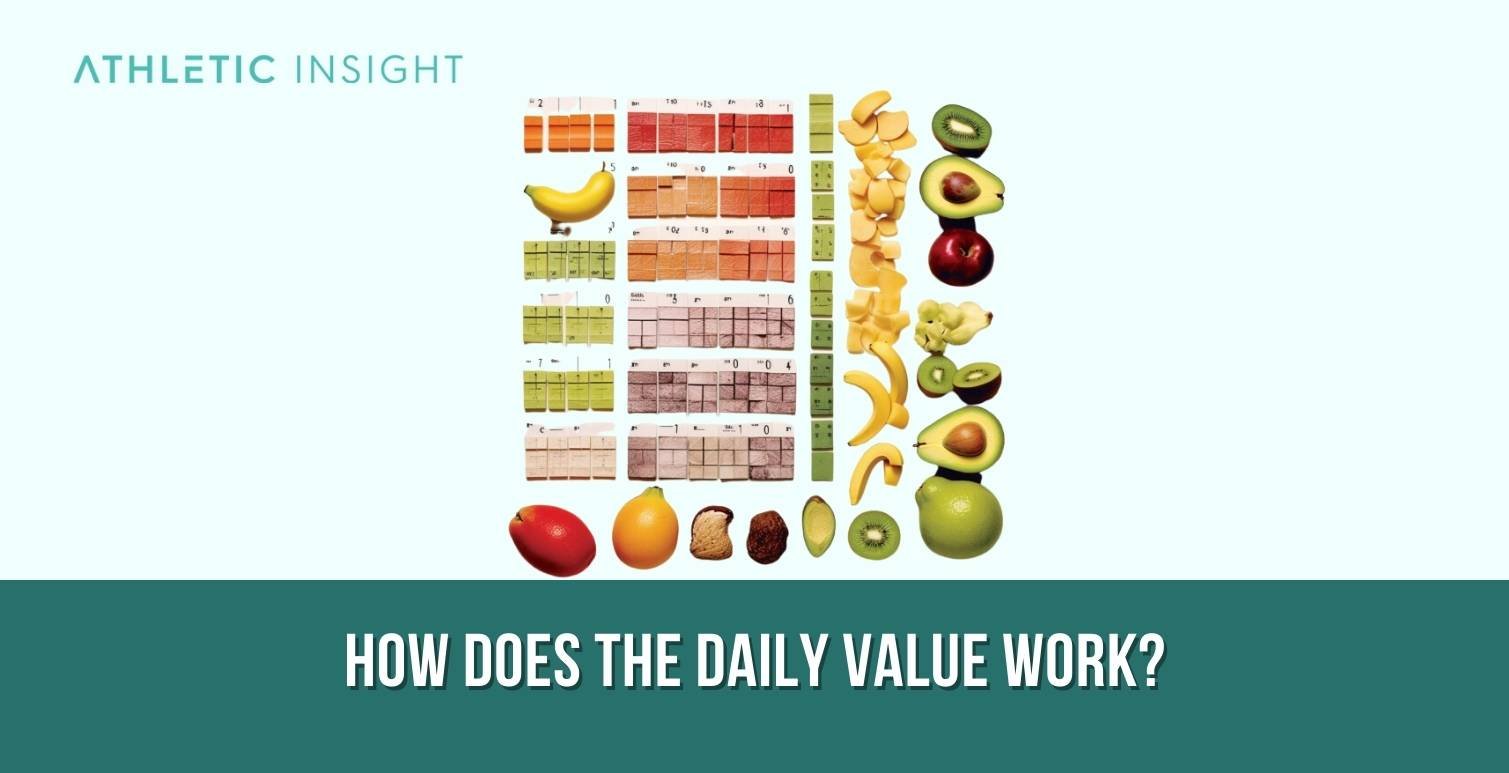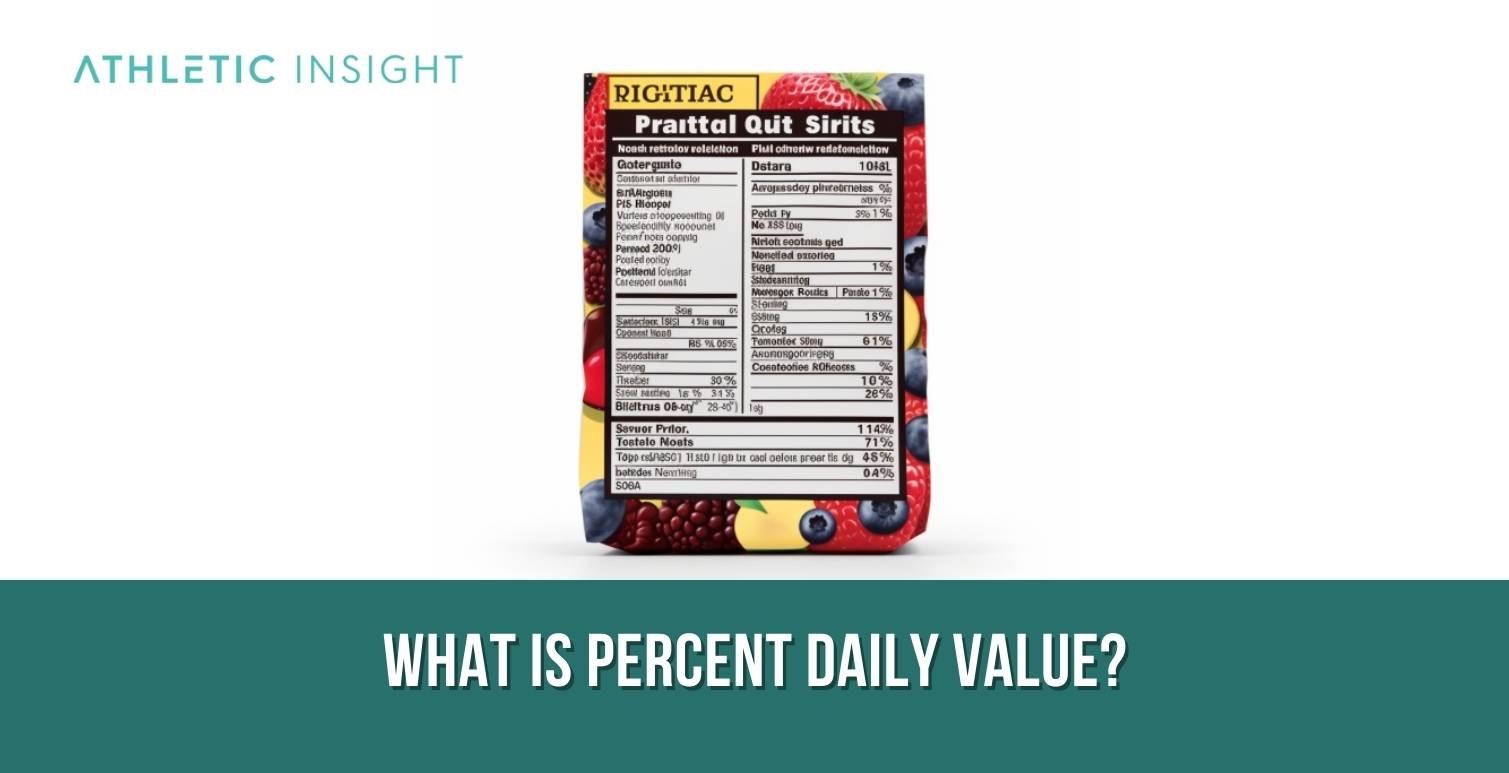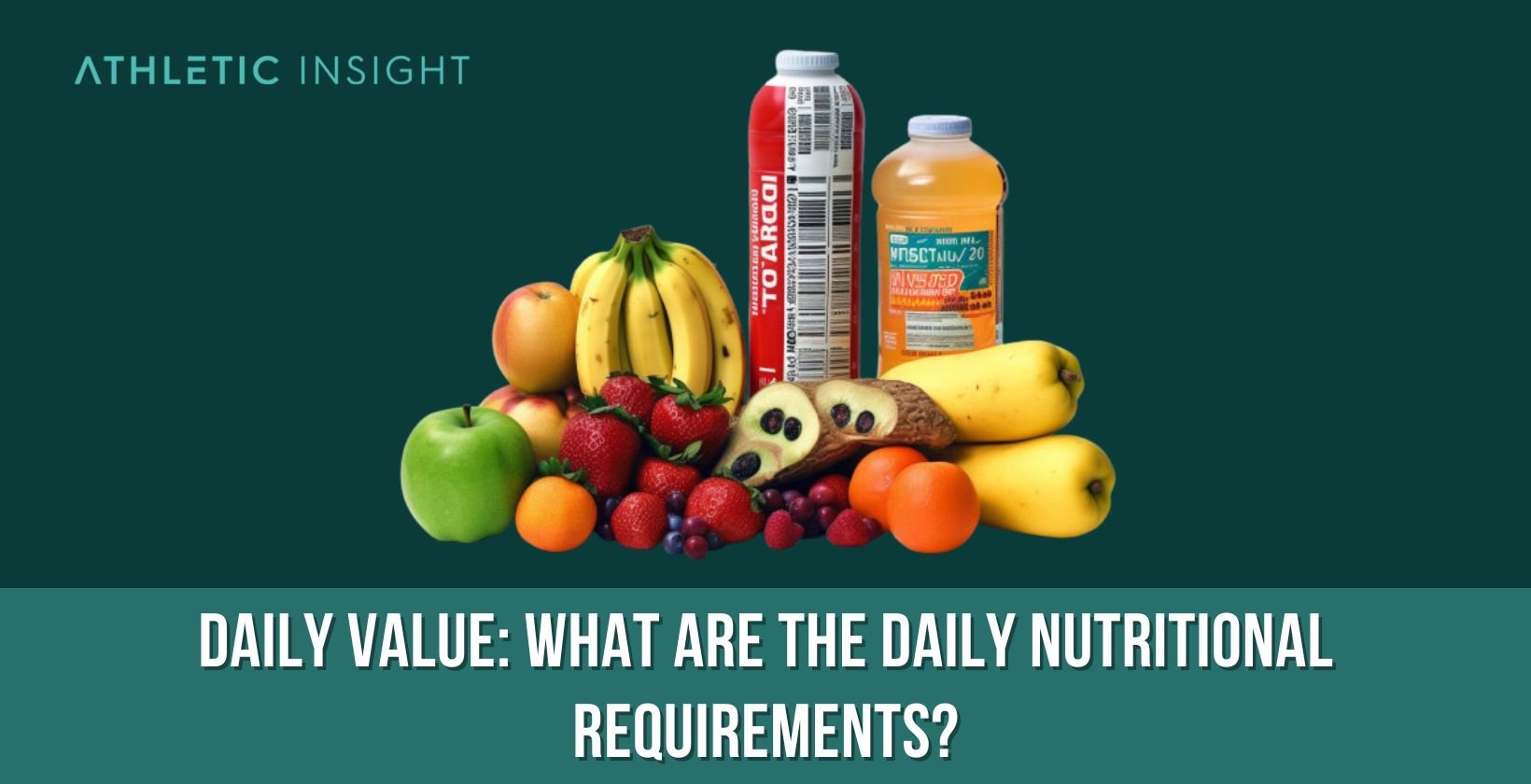In the realm of nutrition, there exist a multitude of terms and concepts that sometimes baffle consumers. Amid these terminologies, understanding the concept of Daily Value (DV) remains instrumental in understanding how to maintain a healthy diet. It intertwines with other significant terms such as daily nutritional requirements, daily nutrition charts, daily values, daily nutrition, daily nutritional requirements chart, nutrition chart, % daily value (%DV), recommended daily intake, and daily nutritional guidelines.
What Does Daily Value Mean in Nutrition?
The Daily Value, or DV, is a metric created by food regulators and health organizations to elucidate how a serving of food contributes to your total daily diet. It epitomizes the recommended dietary intake of a nutrient, often expressed as a percentage based on a 2,000 calorie diet, though calorie needs may vary depending on an individual’s age, sex, weight, and level of physical activity.
How Does the Daily Value Work?
The DV is a salient component displayed on nutrition labels of packaged food products. The principal purpose of listing the Daily Value on food packaging is to help consumers understand the nutritional content of the food in the context of their overall daily diet.

The Daily Value is quantified in various units like milligrams (mg) or grams (g) for different nutrients. For instance, the Daily Value for calcium is denoted in milligrams, considering that it’s a macro-mineral that we require in larger amounts.
What are the Daily Nutritional Requirements?
Daily nutritional requirements represent the intake levels of essential nutrients deemed to be adequate to meet the nutritional needs of practically all healthy people, considering their age and gender. These nutrients encompass macronutrients like carbohydrates, proteins, and fats, and micronutrients, which include vitamins and minerals. An individual’s precise nutrient needs may vary based on numerous factors like age, sex, weight, height, and physical activity levels.
What is the Purpose of the Daily Value Labels?
Daily Value labels present an expedient tool for understanding the nutritional composition of food products. These labels enable consumers to make informed dietary decisions. When a person meets their required DV, they are supplying their body with an adequate quantity of nutrients necessary for optimal health, based on recommended guidelines.
What is Percent Daily Value?
Percent Daily Value (%DV) represents the proportion of the Daily Value that one serving of the food contributes to a total daily diet. It helps to understand how the nutrients in a single serving of the food product align with the recommended dietary allowances.

The relation between DV and %DV is such that if the serving size of a food product contains the exact amount of nutrient DV, the %DV is 100%. For example, if a product has 15g of fat per serving and the DV for fat is 70g, then the %DV for fat is calculated as (15/70) x 100 = 21.4%.
How Does Daily Value Affect Percent Daily Value?
The Daily Value directly impacts the Percent Daily Value. When the DV for a particular nutrient in a food product increases, the %DV concurrently increases, and vice versa. The Percent Daily Value is thus contingent upon the Daily Value and can be understood as an expression of the DV in percentage terms.
What are the Benefits of Daily Value?
The Daily Value concept boasts three main benefits such as comparing and contrasting food products and beverages, managing dietary intake, and understanding the impact of certain foods within a diet.
- Assists consumers in comparing and contrasting the nutrient content of different food products.
- Aids individuals in managing dietary intake of specific nutrients.
- Enables an understanding of how a specific food fits into an overall healthy eating plan.
What are the Challenges of Daily Value?
Despite its benefits, the Daily Value approach also presents three main challenges; misinterpretation leading to excess or not enough nutrients, the %DV may not cater to an individuals unique nutrient requirements, the daily value does not account for certain factors (age, sex, activity level).
- Misinterpretation of %DV can lead to excess intake of certain nutrients.
- Daily values may not cater to the individual nutrient requirements, as these are based on average values.
- The DV does not account for different nutritional needs based on factors such as age, sex, and activity level.
What Nutrients are Mandatorily Listed on Nutrition and Supplement Facts Labels?
Nutrition facts labels mandate the inclusion of thirteen key nutrients. For each nutrient, the label delineates the absolute quantity per serving and the %DV, enabling the comparison of nutrient content among various products.
- Total Fat
- Saturated Fat
- Trans Fat
- Cholesterol
- Sodium
- Total Carbohydrate
- Dietary Fiber
- Sugars
- Protein
- Vitamin D
- Calcium
- Iron
- Potassium
How Does the Daily Value Increase?
The Daily Value of a nutrient in a person’s diet can increase by consuming foods high in that particular nutrient. For instance, increasing consumption of foods high in calcium—such as dairy products, fortified plant milks, or leafy green vegetables—can augment the DV of calcium. Adherence to the daily nutritional guidelines can help balance the intake of different nutrients.
How Does the Daily Value Decrease?
Conversely, the Daily Value of a nutrient can decrease if one reduces the intake of foods rich in that nutrient or if the body’s absorption of that nutrient is compromised due to certain health conditions. For example, limiting the intake of sodium-rich foods will reduce the DV of sodium.
Who Required DV in Product Labels?
The requirement for DV in product labels is a regulatory requirement. In the United States, this is mandated by the Food and Drug Administration (FDA). The FDA regulates the display of nutritional information on food product labels, which includes the Daily Value of various nutrients.
How Does DV in Product Labels Help Consumers of the Daily Diet?
Daily Values on product labels are a crucial guide for consumers aiming to manage their daily nutrient intake. They provide information about the nutrient content of a product in a standardized way that enables comparisons among products. This is especially important for individuals who need to manage the intake of certain nutrients carefully, such as sodium for those with high blood pressure, or probiotics for individuals with digestive health concerns.
What is the Daily Value for Vitamins?
The DV for vitamins varies depending on the specific vitamin. A fat-soluble vitamin (A, D, E, K) has different DVs from water-soluble vitamins (B-vitamins, Vitamin C). For instance, the DV for Vitamin A is 900 micrograms for adults, while the DV for Vitamin C is 90 mg for adult males and 75 mg for adult females.
What is a Good Daily Value?
A good Daily Value for a nutrient varies based on the nutrient in question and the individual’s specific dietary needs. For example, the DV for fiber is 28 grams for a 2,000-calorie diet, so a food that provides 20% of the DV for fiber (5.6 grams of fiber) can be considered high in fiber. It’s essential to consider all nutrient DVs in the context of the total daily diet.
What is the Daily Value for Sugar?
The FDA has set the DV for added sugars at 50 grams per day based on a 2,000 calorie daily diet. Individuals with specific health concerns such as diabetes, heart disease, or obesity may need to limit their intake of added sugars even further.
Is 100 Percent Daily Value Ideal?
Whether achieving 100% of the Daily Value for all nutrients is ideal or not is dependent on various factors. While striving to reach 100% DV for vitamins and minerals can be beneficial, reaching 100% DV for sodium, saturated fat, or added sugars might be undesirable due to the potential negative health impacts associated with high intake of these nutrients. Therefore, one must interpret the %DV in the context of the entire diet and their specific nutritional needs.
Is Following Daily Value Healthy?
Yes, following the Daily Value can guide individuals towards a balanced and healthy diet. However, the DVs are average values designed to meet the needs of most healthy individuals. Therefore, they may not perfectly align with everyone’s individual nutritional requirements, especially those with specific dietary needs or health conditions. As such, while using the DV as a guideline can be beneficial, it is crucial to consider personal dietary requirements and, if needed, consult with a healthcare professional or dietitian.
This comprehensive understanding of Daily Value and its implications can aid in fostering a discerning approach towards food selection, thus ensuring the intake of a balanced and nutritious diet. It’s also a testament to the critical role of education in nutrition, underscoring the importance of understanding the information provided on our food labels.
What Does an Excess or Deficiency in Daily Value Indicate?
Consuming more than 100% DV of a particular nutrient may indicate a surplus in the diet. This is generally not an issue for most nutrients as the body can regulate its absorption or excretion. However, excessive intake of certain nutrients, such as sodium and saturated fats, could be detrimental to health and may lead to conditions such as hypertension and cardiovascular disease.
On the other hand, consistently consuming less than the DV for certain nutrients could indicate a deficiency. Over time, nutrient deficiencies can compromise immune function, bone health, and energy levels, among other things. For instance, consistently low intake of calcium may contribute to osteoporosis, while low intake of vitamin C could lead to scurvy.



